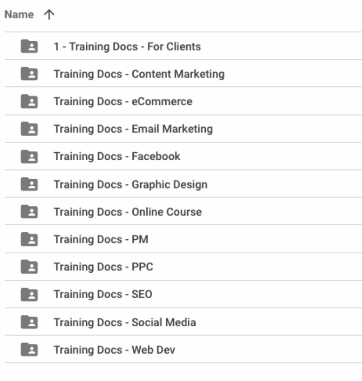
Information overload is inevitable for your business – whether a customer or an employee. No one will know your business like you do and we tend to forget that (and that’s okay!)
Let’s add into the mix that everyone has different learning styles. Some people learn better watching a chef cook on TV, whereas others need to cook themselves to truly learn and understand the recipe.
And if you’re a business owner or leader, that means some employees will learn a process with a few verbal instructions and there will be some that need that extra it of support, hand-holding and repeating yourselves once, twice, a hundred times. You know the ones.
Sit back for a moment and imagine what it would be like if every task in your company was completed the same way, by every employee, every time. (Relax — we’re not referencing some dystopian factory of human automatons.)
Let’s imagine a perfect world – your business should be able to run smoothly without you. Every task done by every employee is completed the exact same way. Well, you don’t really have to imagine if you create a set of standard operating procedures (SOPs) for your business and team.
SOPs are a set of clearly written step-by-step instructions for a specific, complex routine business task. They help your employees take the guesswork out of the equation by breaking down how to perform a task with instructions on what to do and how to do it.
Yes, it does take a good chunk of time to create SOPs. They don’t yield immediate results but think of it as something you want to get out of the way ASAP. Just like doing your laundry, you COULD leave it for tomorrow but by next week you’ve got a menacing pile in the corner you don’t want to make eye contact with, instead of the pair of socks from Monday.
Not convinced about doing laundry or SOPs? Here’s a couple reasons why you should:
1. Your employees will know their role in your business and expectations that come with it.
Whether your employee has been then for 3 months or 3 years, everyone in your business should be on the same page. Especially with the operational procedures and preferences – from safety to dealing with an unhappy customer, SOPs will set the precedent for how employees can perform their job effectively and efficiently.
SOPs provide a checklist of sorts for your employee to understand what’s expected of them and the steps to complete their job successfully. This will help streamline their workflow and in turn waste less company time (and money) and through repeated follow-throughs, your employee will increase efficiency. Allowing you to dedicate their time to support your business in other ways.
Not only that, it gives your employees a sense of independence and autonomy as SOPs will reduce the time for them to seek approval and guidance from you or other senior employees. With an SOP, they’ll have a step-by-step guide that they can refer to at any time.

2. Increase your business’ consistency and efficiency.
A diverse team is always a great thing for a business. The mixpot of experiences and ideas are the foundations of great innovations and collaboration projects.
However, with a diverse team comes with a diverse skill set, approach and result for tasks and processes. Though overall a mixed team will always yield a positive outcome, in the case of customer expectations and quality’s sake, when delivering a product or a service, you need things done the same way every time.
When providing a clear how-to to everyone in the company, the outcomes tend to be more predictable and reliable. Consistency will improve the customer experience and boosts quality assurance.
Customer experience aside, there are also things you must consider such as safety and compliance. Human error is inevitable, but given a detailed SOP will reduce the chance in any given process.
Though nothing can always be perfect, all the time, providing true and tested procedures will create a safer environment for everyone.
While there’s always a possibility that something can go wrong, a clear and tested set of SOPs can, generally speaking, make a process safer. Of course, this assumes the SOPs are always up-to-date and as clear as possible.
3. Identify your business’ bottlenecks and measure employee performance
The beauty of standardisation is that you can find what’s out of place, what’s not working or a different outcome as occurred pretty quickly.
In this case, you can decide if this approach is innovative or redundant. This will either reaffirm or reject that your SOPs are of the best quality they can be.
For performance measures, creating a guide of steps and expectations (i.e. core competencies) it’ll become easier for you to assess your employees’ performance and identify gaps that need filling. This will allow you the opportunity to build on your employees’ abilities or even uncover underutilised skill sets. This creates a supportive environment, where your employees feel like it’s okay to make a mistake as long as they grow from it. This sense of accountability will cultivate trust between you and your employee.
Accountability allows others to rely on each other, like meeting deadlines, doing the assigned task and feeling comfortable enough to approach a co-worker or manager for help.
4. Saves time and money during employee training.
Streamlining is everything for a small business, or really any business. You’ve got a great service or product but if you’re not efficient, then the former doesn’t matter much.
SOPs will help counter the unpredictability of a business. Let’s say you hire an employee in March (a slow season), you’re able to take extra time to answer any lingering questions and let them slowly transition into the business. Great. Good for them.
But what about the employee you hire in mid-November? Where you don’t even have time to show them the toilet because you’re too busy with customer leads (yay!) and requests. It’s easy to leave them and let them sink or swim. Typically, that scenario can go one of two ways. They somehow get the hang of it enough to create a mediocre output but not great or they quit. Both options aren’t that great.
When there is a set of SOPs available in one place, it makes sure employee training and management are efficient and cost-effective. You are essentially creating a library of resources, that can act as an encyclopedia for your business. Not only for new employees but for long-term employees in need of new training for updated procedures.
Never again will you need to sacrifice time, money or quality for the purpose of the training.
This accessibility creates transparency that can make a new employee’s training experience a positive one, setting them up for success in the long run. And that can help your established employees achieve consistency faster, perform better, and step into their autonomy by knowing what’s expected of them – whilst preventing organisational failures.
Remember: As your company grows, technology changes and time passes – it is important to always let your SOPs reflect that. Make sure they are maintained and up to date.
Here are a few of the most common maintenance issues you’ll want to keep in mind when you create and maintain a set of SOPs:
- Lacking history such as annotating the SOPs with the correct version number and date to show the trajectory of procedural changes.
- Absence of procedural changes.
- Missing page numbers and other helpful visual cues and formatting.
- Failure to include a summary of changes from one version of the SOPs to the next.
- Failure to provide easy access to employees.
About the Author:
Amy Miocevich is an Australian author of Very Good Marketing, director of her company Lumos Marketing and a mum. Amy has a plethora of business knowledge and experience helping individuals across all industries over her professional career. She has a deep and innate passion to help small businesses achieve their Big Hairy Audacious Goals, whatever they may be. When Amy isn’t busy working or waking up at 5 am to run, she is probably eating ramen or wanting to eat ramen. Say hi to Amy at amy@lumosmarketing.com.au.










